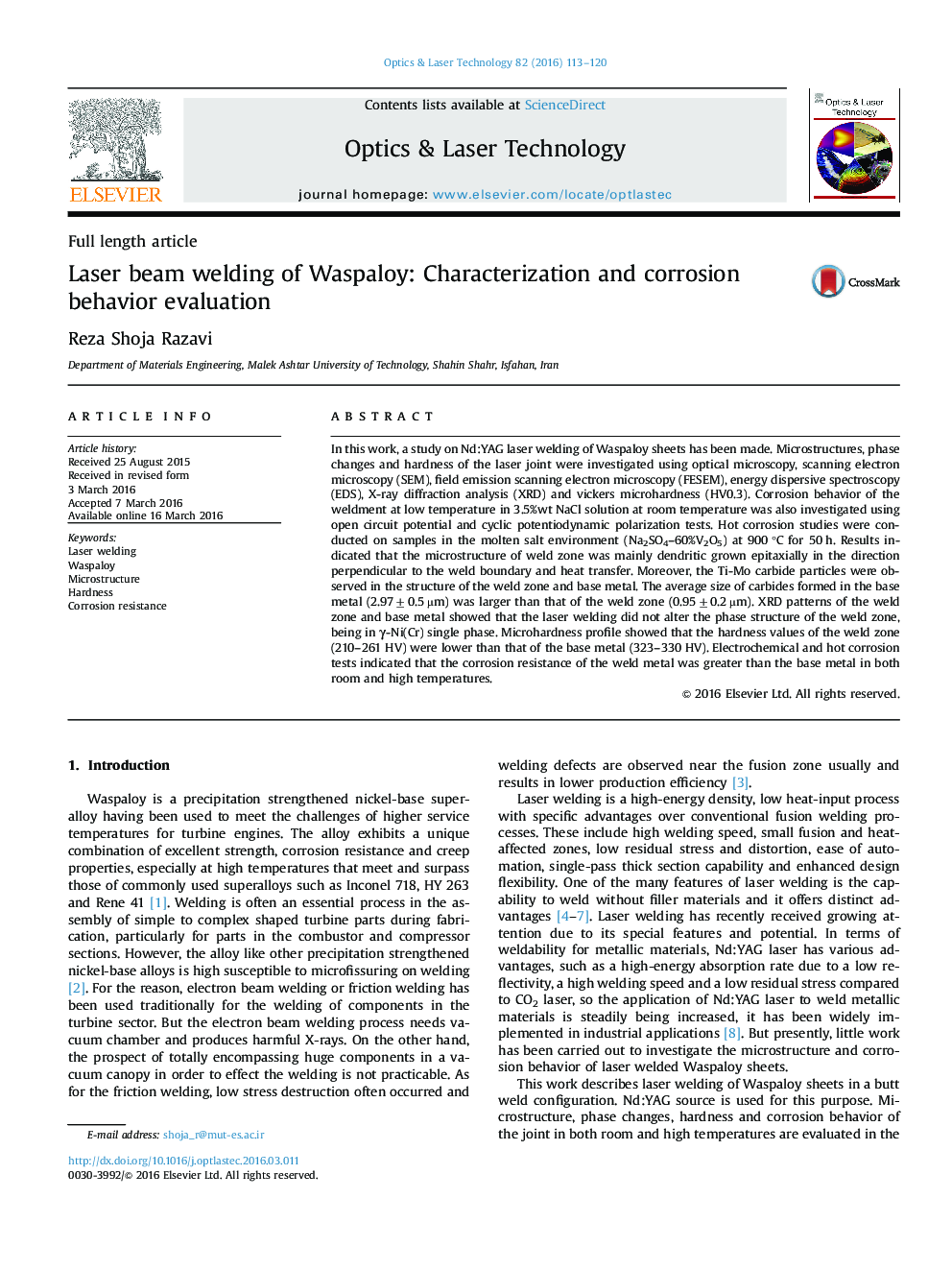| کد مقاله | کد نشریه | سال انتشار | مقاله انگلیسی | نسخه تمام متن |
|---|---|---|---|---|
| 733378 | 1461617 | 2016 | 8 صفحه PDF | دانلود رایگان |

• Nd:YAG laser welding of Waspaloy was done with no major defects and cracks.
• The weld zone structure contained mainly of dendrite matrix and distributed Ti–Mo carbide particles.
• Hardness of the weld zone was decreased about 20% compare to the base metal.
• The weld metal exhibited superior corrosion resistance than the base metal in room temperature.
• Hot corrosion resistant of that the weld metal was significantly better than the base metal.
In this work, a study on Nd:YAG laser welding of Waspaloy sheets has been made. Microstructures, phase changes and hardness of the laser joint were investigated using optical microscopy, scanning electron microscopy (SEM), field emission scanning electron microscopy (FESEM), energy dispersive spectroscopy (EDS), X-ray diffraction analysis (XRD) and vickers microhardness (HV0.3). Corrosion behavior of the weldment at low temperature in 3.5%wt NaCl solution at room temperature was also investigated using open circuit potential and cyclic potentiodynamic polarization tests. Hot corrosion studies were conducted on samples in the molten salt environment (Na2SO4–60%V2O5) at 900 °C for 50 h. Results indicated that the microstructure of weld zone was mainly dendritic grown epitaxially in the direction perpendicular to the weld boundary and heat transfer. Moreover, the Ti-Mo carbide particles were observed in the structure of the weld zone and base metal. The average size of carbides formed in the base metal (2.97±0.5 µm) was larger than that of the weld zone (0.95±0.2 µm). XRD patterns of the weld zone and base metal showed that the laser welding did not alter the phase structure of the weld zone, being in γ-Ni(Cr) single phase. Microhardness profile showed that the hardness values of the weld zone (210–261 HV) were lower than that of the base metal (323–330 HV). Electrochemical and hot corrosion tests indicated that the corrosion resistance of the weld metal was greater than the base metal in both room and high temperatures.
Journal: Optics & Laser Technology - Volume 82, August 2016, Pages 113–120